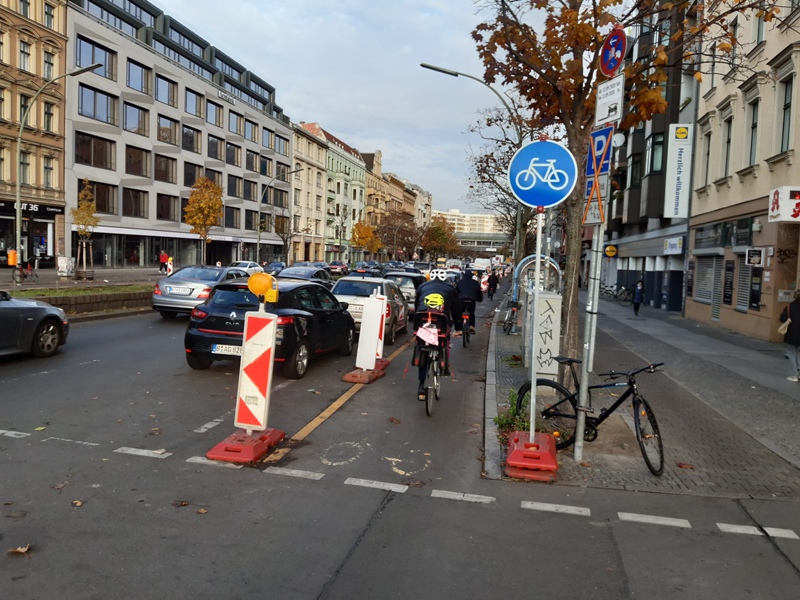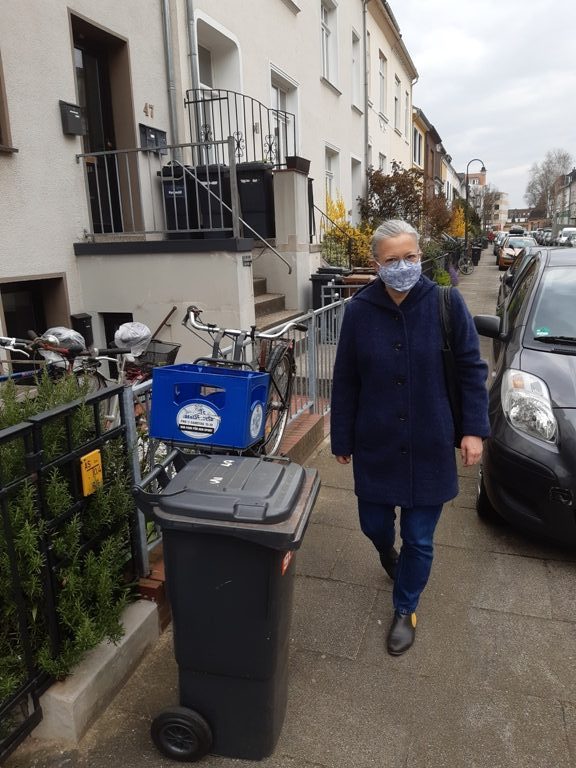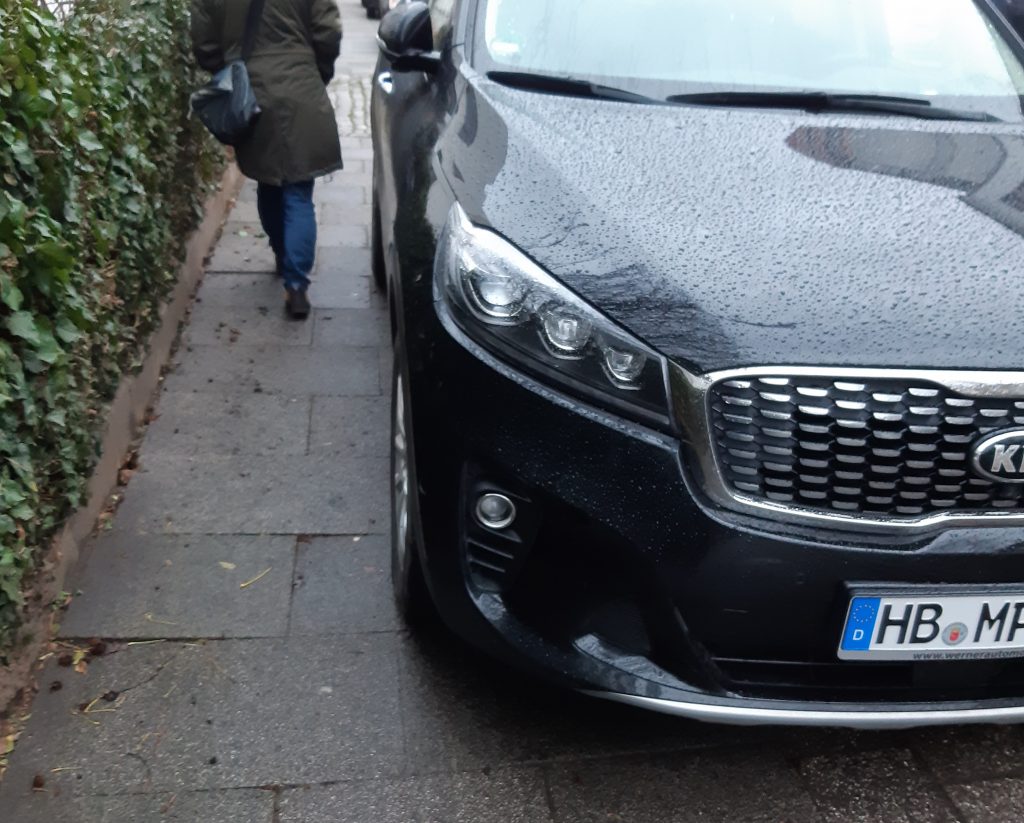There is hardly an issue in Bremen that is as heated as the parking of cars in residential areas. Questions like these arise: Who does resident parking help? Is parking on pavements permissible? And if so, under what conditions? What rights do pedestrians have? The debate is characterised by assumptions and unsubstantiated claims on the part of both proponents and opponents of a sustainable traffic turnaround. Reason enough to take a look at the binding provisions of road and traffic law in a series of articles on Bremenize. Continue reading Pavement Parking and Accessibility
Category Archives: Olaf Dilling
Accessibility in Bremen Traffic (Part A: Road Law)
Part 1 : The legal Situation on Bremen’s Streets
Public space is always a scarce commodity in cities that have grown over time without central planning. Ever more, and ever bigger, vehicles are competing for the same amount of space. At the same time, private automobiles are continuing to push other modes of transport out of this public space. Currently, political as well as legal resistance to this situation is growing, supported by environmental organisations such as BUND, NABU, citizens‘ and neighbourhood initiatives, and transport organisations such as ADFC, VCD; Fuss e.V., Forum for Transportation Transformation („Forum Verkehrswende“), Autofreier Stadttraum („Auto Free City Space/City Dreams“) and Coalition for Transportation Transformation (“Bündnis Verkehrswende“). In addition, many citizens have filed suit against the city-state for its lack of action against vehicles parked illegally on sidewalks. This problem is further complicated by electric scooters parked on sidewalks In the summer of 2020, a visually impaired man was seriously injured in Bremen when he tripped over an electric scooter. He has filed suit against the city-state for not protecting him from injury.
Parking on the sidewalk in Mindener Strasse in Peterswerder in Bremen (foto: Olaf Dilling)
Continue reading Accessibility in Bremen Traffic (Part A: Road Law)
Protected Bike Lanes in Corona Times: Do it Bremen!
After Corona (2): When will Bremen get Protected Bike Lanes?
Shortly before the outbreak of the pandemic, several protected bike lanes were announced in Bremen. In the meantime, we in Germany are in the middle of the second wave of infection – with a kind of “lockdown light”. Already during the first wave, cycle lanes were quickly and easily set up on multi-lane roads in many cities around the world and also in many German cities. These cities have thus responded to the changed conditions and the changing needs of their citizens during the pandemic.
In contrast, Bremen has so far not responded to the pandemic with a single pop-up cycle path.

Berlin, Kottbusser Damm: pop-up bike lane. Photo: Olaf Dilling
Continue reading Protected Bike Lanes in Corona Times: Do it Bremen!
After Corona – The future of public space
The shock of Corona in recent history is only comparable to the attacks of September 11, 2001. In both cases new rules and state powers were established almost overnight. This time it is not a question of fighting terrorism, but of preventing epidemics. But this time, too, almost all areas of public and private life are affected. The Corona crisis will have a particular impact on the future design and use of public space. Because of the need to protect against infection, it is likely that even after the current phase of rigid restrictions, distancing rules will have to be observed for the foreseeable future.

But it’s still in our hands. We can either allow further restrictions to be placed on public space or, by redistributing it, enable equal participation. This could go hand in hand with a transport policy that puts people at the centre, and at the same time takes better account of air pollution control and climate protection. Pedestrian traffic can be promoted by planning sufficient space on pavements. The capacities of public transport and railways must be increased to minimise the risk of infection. Car lanes can be reserved for bicycles to ensure safety and distance. Continue reading After Corona – The future of public space
